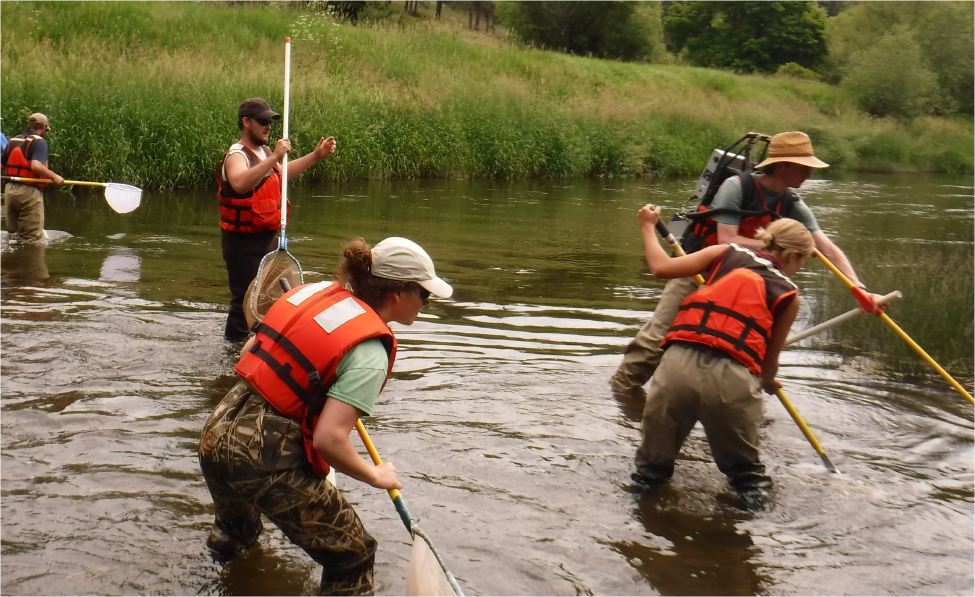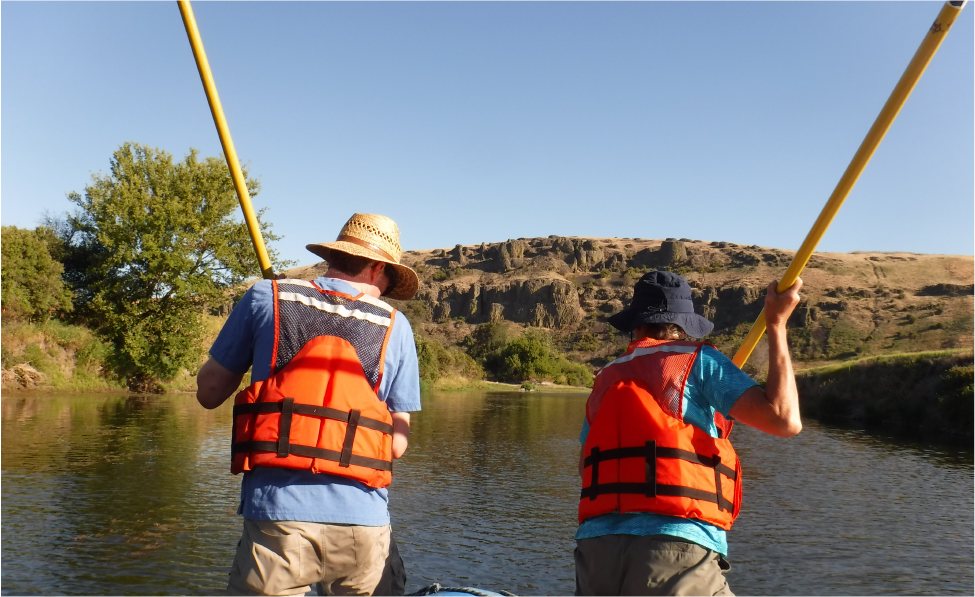
A big catch for clean water
Crews from Ecology and local Conservation Districts just spent six weeks collecting fish from the Palouse River in Southeastern Washington. Collecting these fish is part of our program that monitors fish in rivers and streams for contaminants.
The fish collected will help us measure changes in the water quality of the river. The fishing effort yielded 348 “keepers,” including suckers, pike minnow, smallmouth bass, chiselmouth, and carp.
The fish collected by the team of researchers are analyzed for harmful toxic pollutants, like PCBs and other chlorinated pesticides like DDT.
Capturing just the right number, size, and species of fish at just the right location can make fish collection difficult. Researcher Keith Seiders of Ecology’s Environmental Assessment Program says that collecting fish in smaller rivers like the Palouse can be challenging, but it’s worth the effort.
“It’s worth it because these fish in the analyses give us information that will help us make decisions that can impact communities and the way we do business for decades to come," Seiders said.
What do the fish tell us?
Toxic chemicals used in the past can end up in the environment and get washed into rivers and streams where fish accumulate them. Even though some of these chemicals were banned in the United States more than 35 years ago and are no longer used, they persist in the environment because they can take decades to break down and become harmless.
“Fish are a great collector of these chemicals because they’re in the aquatic system and everything flows downstream and into the waters. So that’s where we can measure these chemicals accurately in the environment. And it tells us about how widespread they may be," Seiders said.
Fishing for solutions
A 2005 study sparked communities in the Palouse watershed to take action to control pollution. We worked with local governments to develop a water cleanup plan. This plan identified chemical sources and listed actions to address the problem areas.
“The monitoring that our group does is so important to help provide the information to let communities and states and residents make educated decisions about how to address problems with pollution in their environment," Seiders said.
Reeling in results
“The results are used by [Washington State] Department of Health. They’ll look at the results to see if a risk assessment is needed for the levels of toxic contaminants in the fish. If they’re high enough, they will do more work and issue a fish consumption advisory," Seiders said.
The results from this research are expected to be reported in 2019. The report will tell the agency about changes in the amount of toxic pollutants in the Palouse River since the 2005 study. It may even give Ecology and local communities some insight into how the water cleanup plan is progressing.


